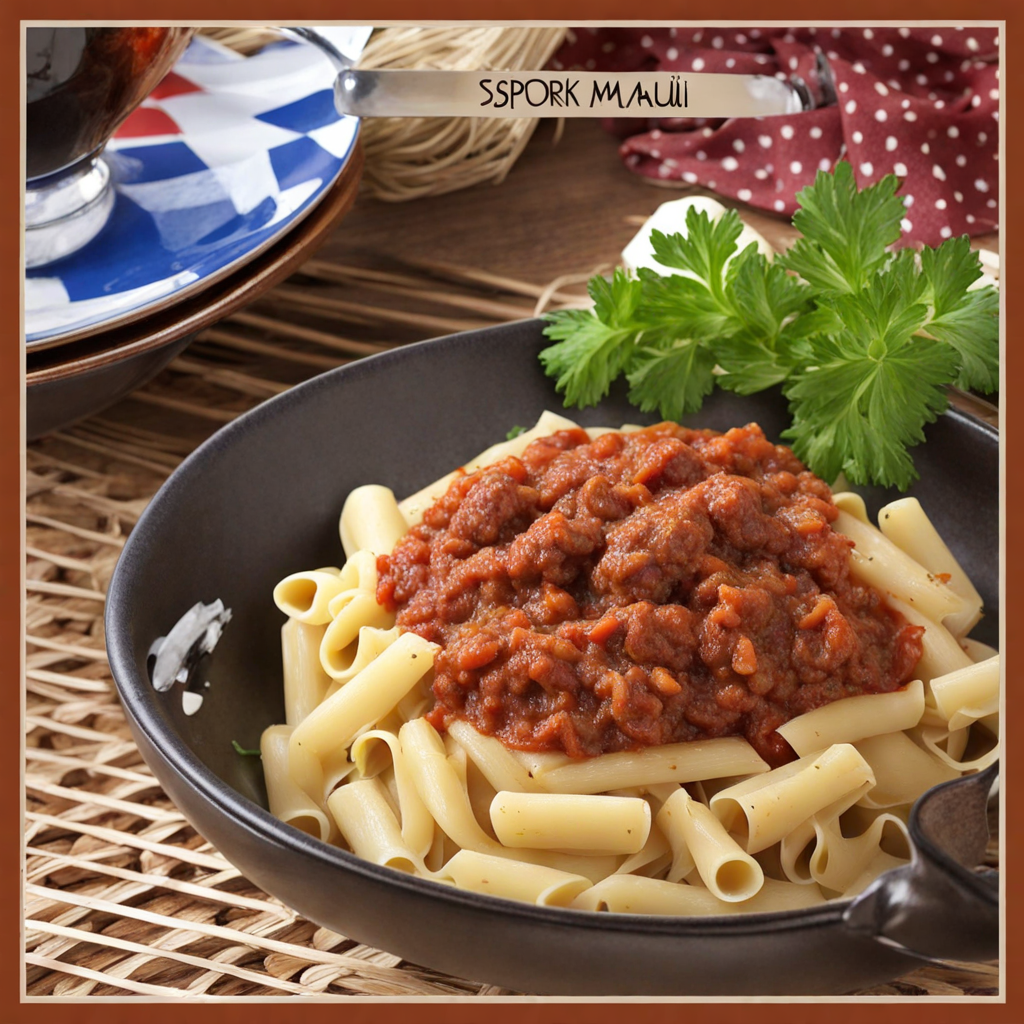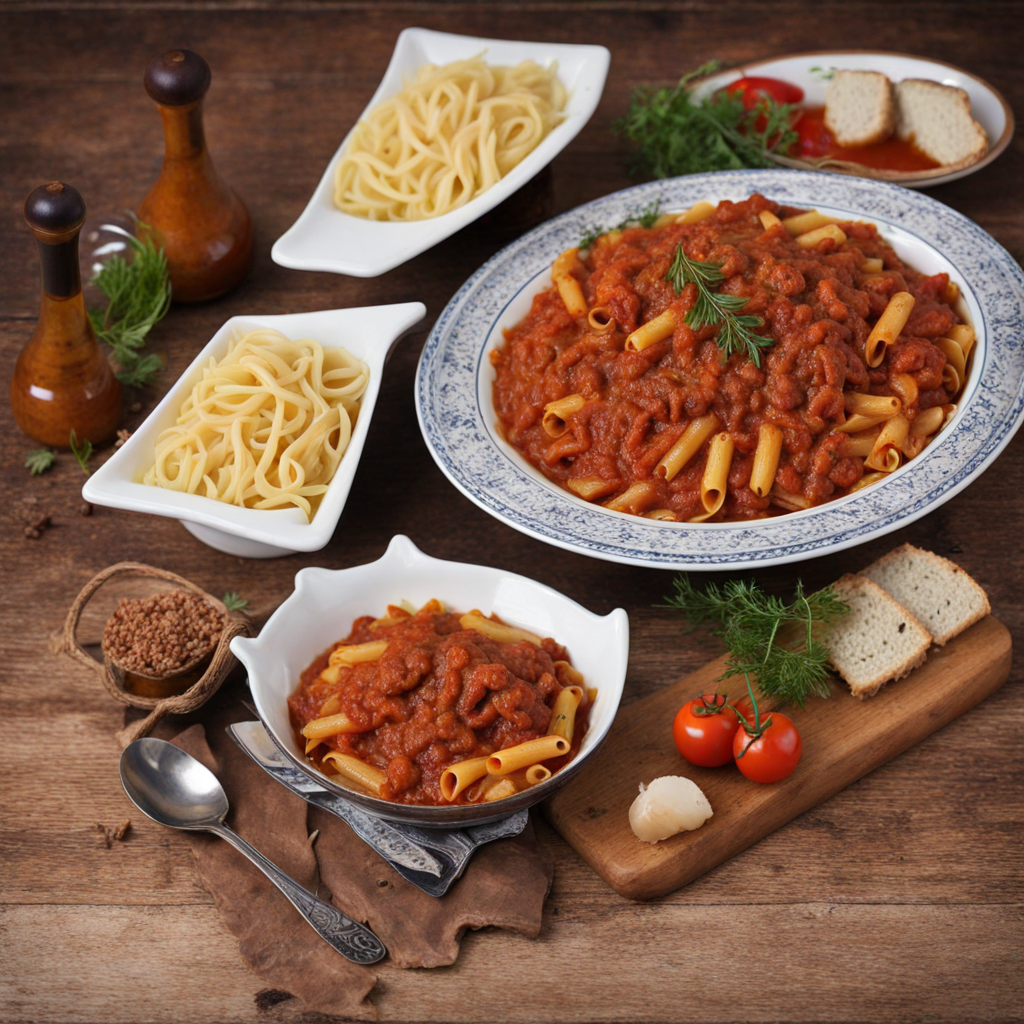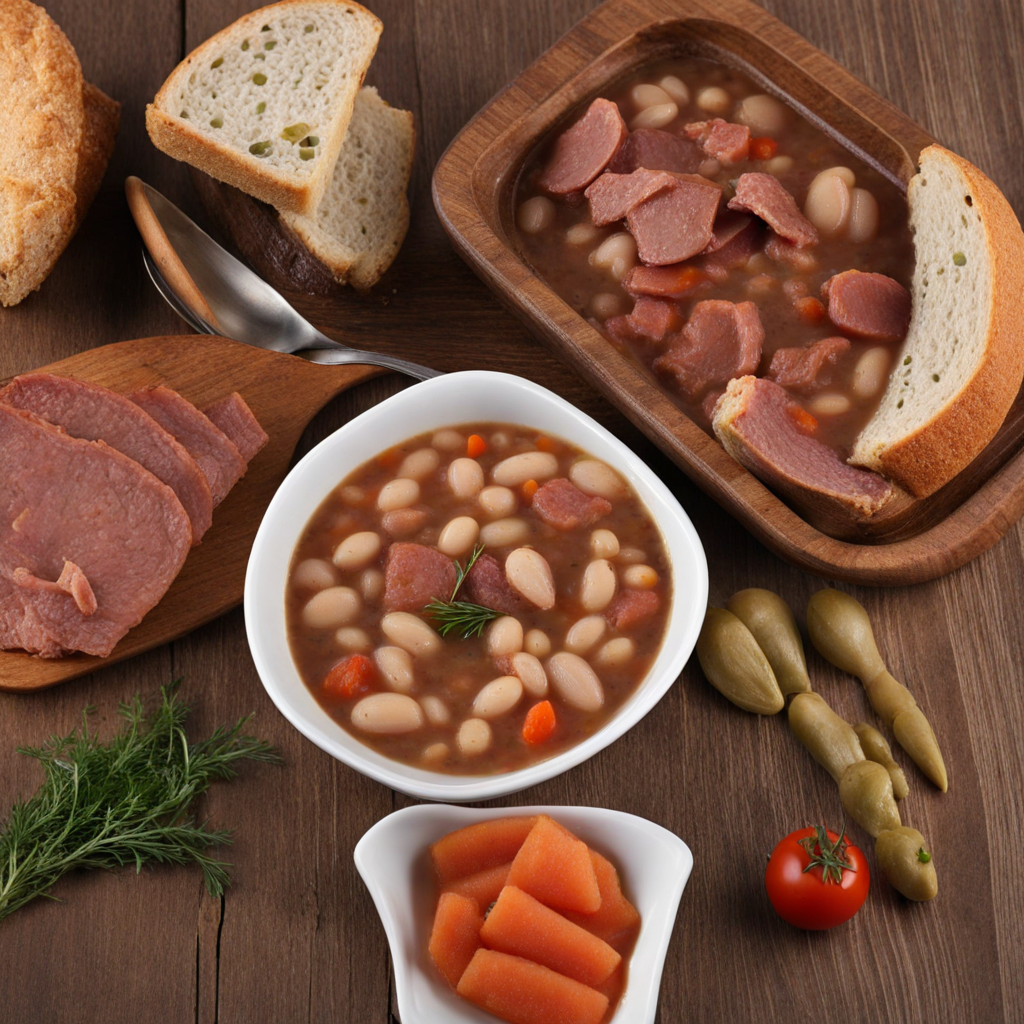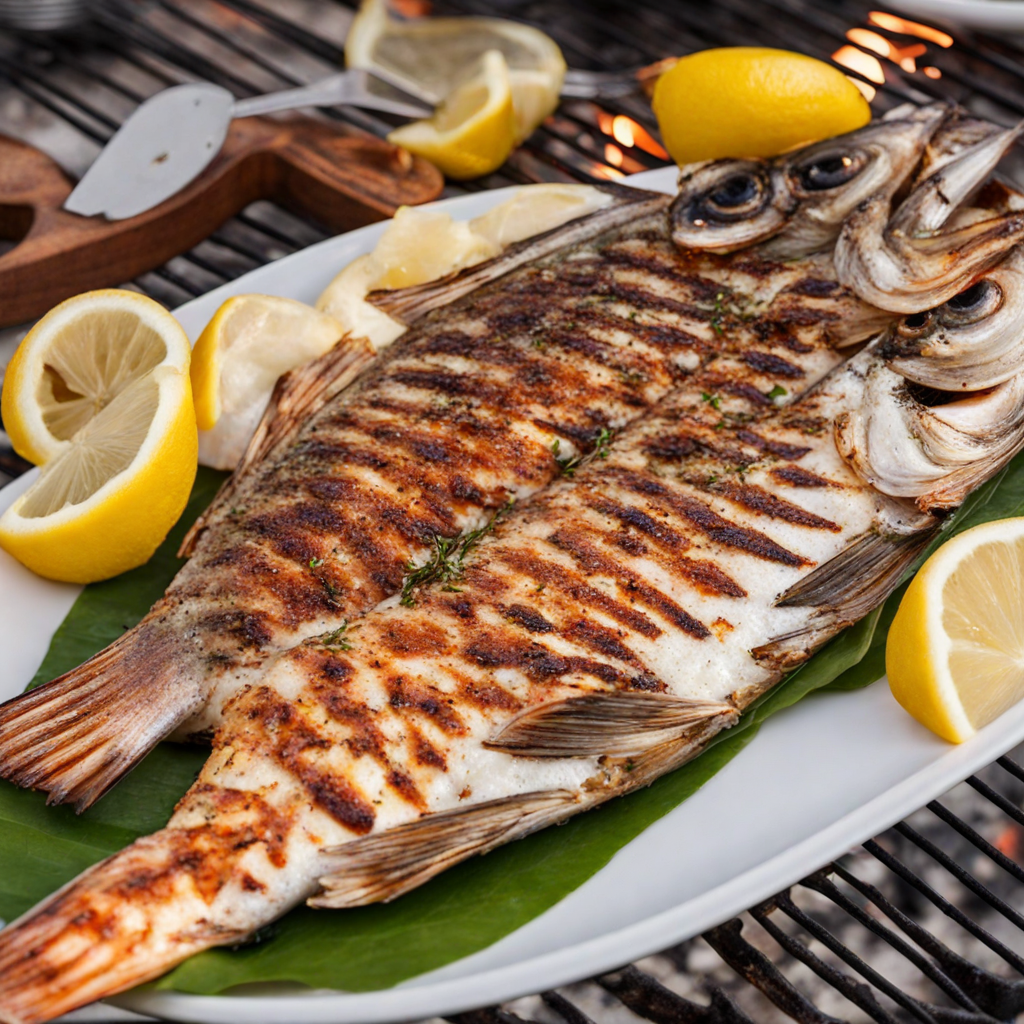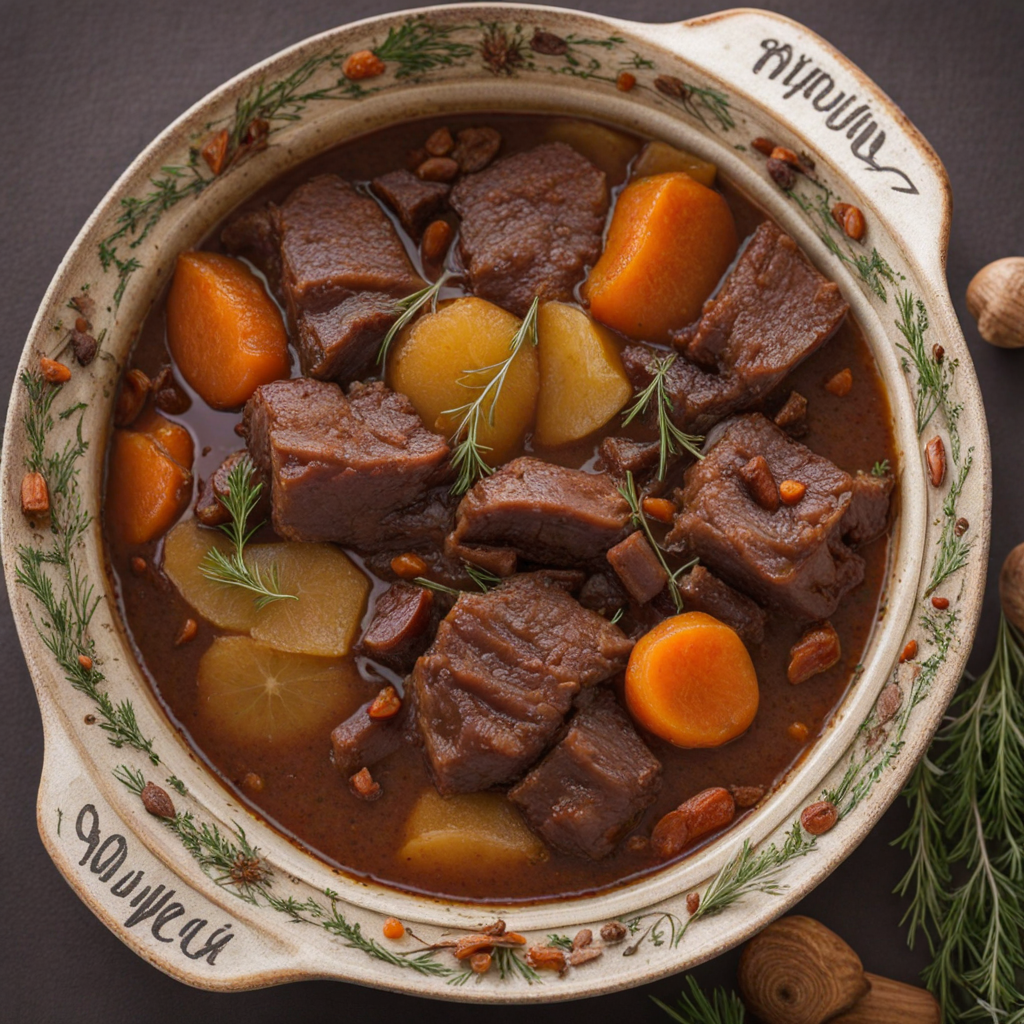Šporki makaruli
Šporki makaruli is a traditional Croatian dish that hails from the coastal region of Dalmatia, particularly beloved in the city of Šibenik. This unique pasta dish features thick, handmade macaroni, known as 'makaruli', which are typically made from flour and water, giving them a hearty and chewy texture. The pasta is often cooked al dente, allowing it to hold up beautifully against the rich and flavorful sauces that accompany it. The name 'šporki' translates to 'dirty' in Croatian, a playful nod to the dish's rustic appearance, which is characterized by its hearty, sauce-laden presentation. The sauce of šporki makaruli is where the dish truly shines, often made with a combination of slow-cooked meats such as pork or beef, and sometimes even shellfish, simmered in a thick tomato base. This rich sauce is infused with aromatic herbs and spices, including bay leaves, garlic, and sometimes a touch of red wine, creating a depth of flavor that is both comforting and deeply satisfying. The dish is typically prepared as a one-pot meal, allowing the flavors to meld beautifully, with the pasta absorbing the savory juices from the meat and sauce. To serve, šporki makaruli is usually garnished with a sprinkle of freshly grated cheese, such as Parmesan or sheep's cheese, adding a salty and creamy contrast to the robust flavors of the dish. Often enjoyed with a side of crusty bread to soak up any remaining sauce, this dish embodies the essence of Croatian home-cooked meals—hearty, flavorful, and filled with love. Each bite offers a taste of the Mediterranean, making it a perfect choice for those eager to explore the culinary treasures of Croatia.
How It Became This Dish
The Story of Šporki Makaruli: A Culinary Treasure of Croatia #### Origins Šporki makaruli, a dish that speaks volumes about the rich culinary tapestry of Croatia, originates from the Dalmatian region, particularly the coastal areas where the fusion of various cultures has resulted in a unique gastronomic landscape. The name "Šporki" translates to "dirty" in Croatian, which may seem unappealing at first glance, but it actually hints at the rustic and hearty nature of this dish. The term "makaruli" refers to a type of pasta, reminiscent of macaroni or large tubular shapes, which are traditionally made from durum wheat. This dish is deeply rooted in the agricultural practices of the region, relying heavily on locally sourced ingredients. Historically, it was a peasant fare, crafted from simple ingredients that were readily available, such as pasta, meat, and vegetables. The use of pasta in Croatian cuisine can be traced back to the influence of Italian culinary traditions, which permeated through the Adriatic Sea, particularly during the Venetian rule from the 15th to the 18th centuries. However, Šporki makaruli has evolved into a dish that reflects the unique agricultural and cultural context of Croatia. #### Cultural Significance Šporki makaruli embodies the spirit of communal dining and familial gatherings. It is a dish often prepared for large family celebrations, gatherings, and festivals. The communal aspect of cooking and sharing this meal fosters a sense of unity among families and friends, highlighting the importance of food in social bonding in Croatian culture. Moreover, the dish has become emblematic of the Dalmatian way of life, where hearty meals are a symbol of hospitality. The preparation of Šporki makaruli is often a communal affair, with family members coming together to contribute to the process, sharing stories, laughter, and traditions. It is not merely a meal but an experience that encapsulates the essence of Croatian heritage. In recent years, Šporki makaruli has gained popularity beyond its regional roots, representing a broader movement to celebrate and preserve traditional Croatian cuisine. Chefs in both local taverns and upscale restaurants have revitalized this dish, paying homage to its rustic origins while introducing modern culinary techniques. This revival is part of a larger trend in Croatia to embrace and promote traditional foods as a means of cultural identity and tourism. #### Ingredients and Preparation The heart of Šporki makaruli lies in its ingredients. The dish typically includes pasta, meat (most commonly pork or beef), vegetables (such as onions and bell peppers), and a rich tomato sauce. What sets Šporki makaruli apart from other pasta dishes is the way the ingredients are combined and cooked together, allowing the flavors to meld beautifully. 1. Pasta: The makaruli pasta is usually homemade, made from flour and water, and shaped into tubular forms. This pasta serves as a perfect vessel for soaking up the rich sauce. 2. Meat: Traditionally, pork is favored, although variations may include beef or even lamb, depending on the region and personal preference. The meat is typically cut into chunks and browned to enhance its flavor before being simmered with the sauce. 3. Vegetables and Sauce: Onions and bell peppers are sautéed alongside garlic to create a fragrant base. Tomato paste or fresh tomatoes are added, along with a variety of spices such as paprika, bay leaves, and sometimes a splash of red wine for depth. The dish is then simmered, allowing the flavors to intensify. 4. Assembly: The cooked pasta is mixed with the meat and sauce, ensuring every piece is well-coated. The final dish is often garnished with fresh parsley and grated cheese, providing a pop of color and additional flavor. #### Development Over Time Šporki makaruli has undergone various transformations since its inception. In its early days, the dish was primarily a home-cooked meal, prepared with whatever ingredients were at hand. As Croatia's culinary landscape evolved, the dish began to reflect regional variations, with different areas putting their unique twists on the traditional recipe. In the 20th century, as Croatia underwent significant political and social changes, the culinary scene also began to shift. The rise of tourism in the late 20th century brought international attention to Croatian cuisine, and traditional dishes like Šporki makaruli began to be featured in restaurants catering to tourists. This exposure led to a resurgence of interest in local dishes, prompting chefs to refine and innovate while still respecting the dish's roots. Today, Šporki makaruli is celebrated not only for its flavor but also for its cultural significance. It appears on the menus of local konobas (taverns), family-run restaurants, and culinary festivals across Croatia. Chefs have taken to experimenting with the dish, incorporating local ingredients and contemporary cooking techniques while honoring the essence of the original recipe. The dish has also become a staple at food festivals, where it is showcased as a symbol of Croatian heritage and culinary pride. #### Šporki Makaruli in Contemporary Culture In recent years, the resurgence of interest in traditional foods has led to Šporki makaruli being featured in various culinary competitions and food festivals, highlighting its place in the modern Croatian culinary scene. Chefs are now exploring ways to present this humble dish in new and exciting formats, often pairing it with local wines or modern side dishes. Social media has played a crucial role in promoting Šporki makaruli, with food bloggers and influencers sharing their own renditions of the dish. This has not only increased its visibility but also encouraged a new generation to appreciate the cultural and historical significance of traditional Croatian cuisine. Moreover, the dish has found its way into the hearts and homes of those who have experienced Croatian hospitality. Visitors to Croatia often seek out Šporki makaruli as a must-try dish, ensuring that its legacy continues to thrive as a symbol of Croatian identity. #### Conclusion Šporki makaruli is more than just a dish; it is a reflection of Croatia's history, culture, and communal spirit. With its humble origins as peasant food, it has transformed into a celebrated culinary delight, capturing the hearts of locals and visitors alike. As it continues to evolve and adapt to contemporary tastes while preserving its traditional roots, Šporki makaruli stands as a testament to the enduring power of food to connect people across time and space.
You may like
Discover local flavors from Croatia


